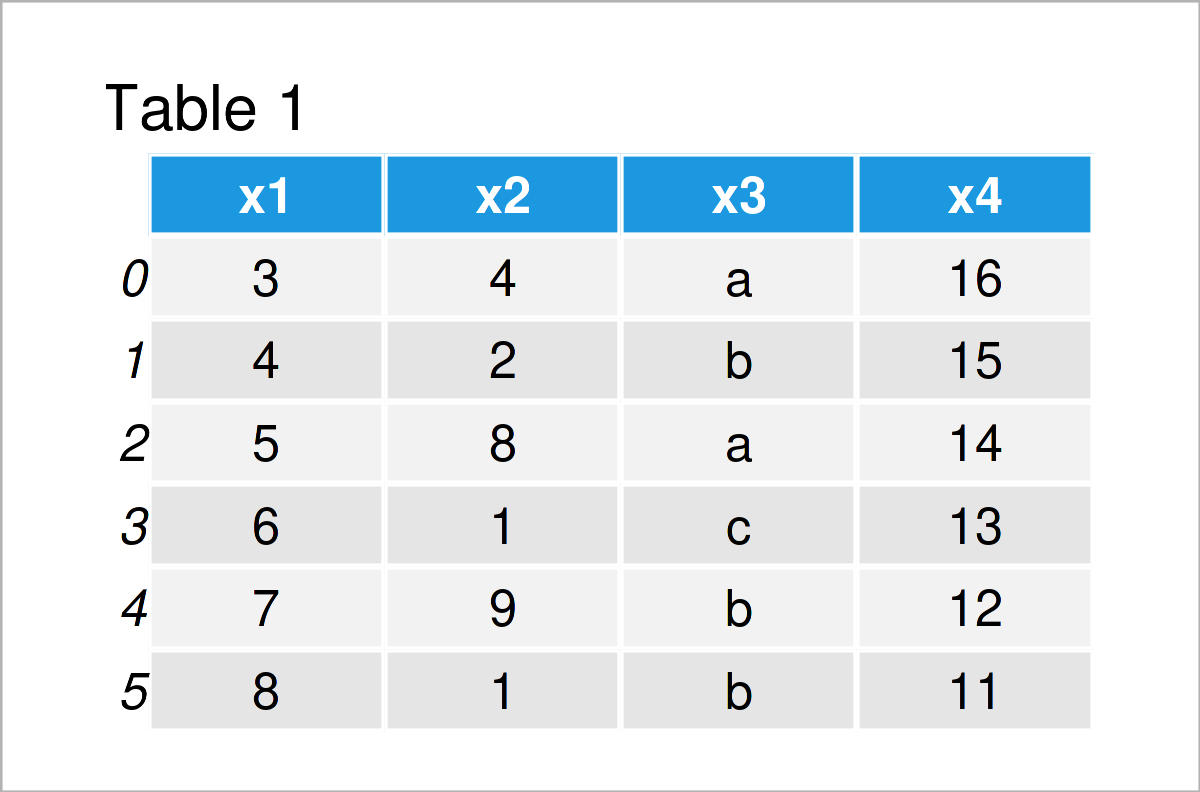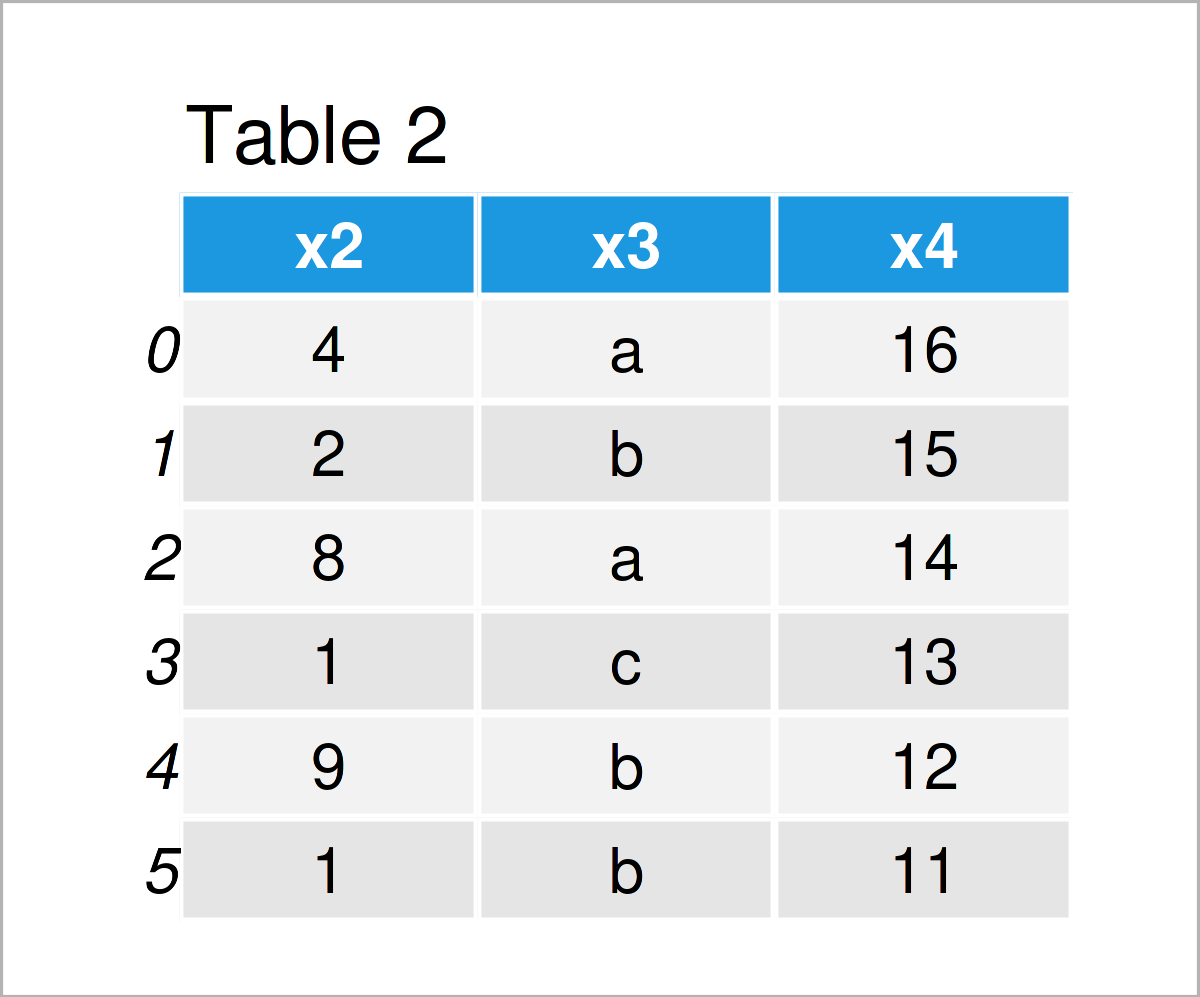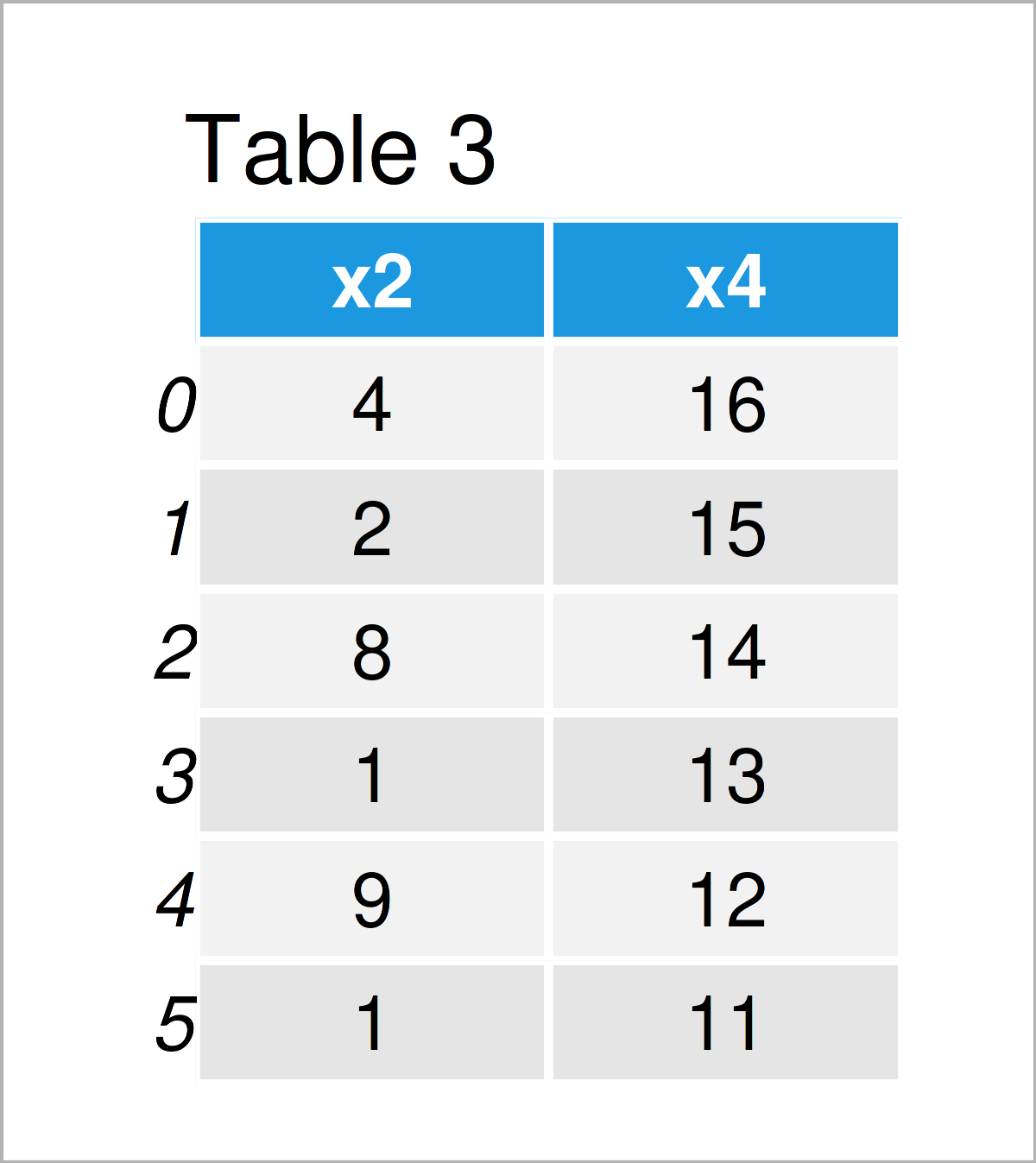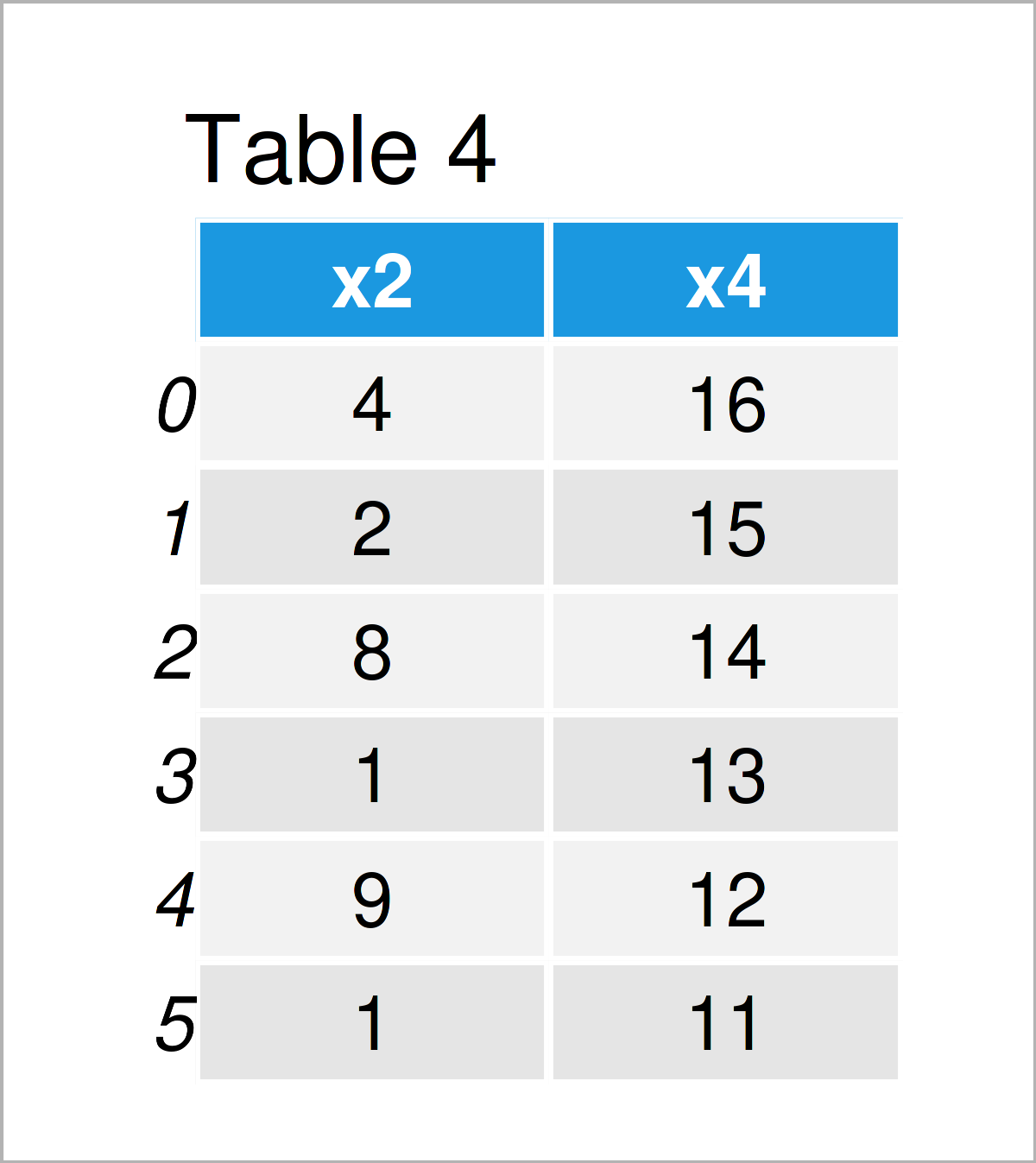Delete Column of pandas DataFrame in Python (3 Examples)
This article shows how to drop one or multiple variables from a pandas DataFrame in Python programming.
The tutorial will contain these content blocks:
Let’s dig in:
Example Data & Libraries
In order to use the functions of the pandas library, we first have to load pandas:
import pandas as pd # Load pandas library
We use the following data as basement for this Python programming tutorial:
data = pd.DataFrame({"x1":range(3, 9), # Create pandas DataFrame "x2":[4, 2, 8, 1, 9, 1], "x3":["a", "b", "a", "c", "b", "b"], "x4":range(16, 10, - 1)}) print(data) # Print pandas DataFrame

Table 1 shows that our example data contains six rows and four variables that are named “x1”, “x2”, “x3”, and “x4”.
Example 1: Remove Column from pandas DataFrame by Name
This section demonstrates how to delete one particular DataFrame column by its name.
For this, we can use the drop() function and the axis argument as shown below:
data_new1 = data.drop("x1", axis = 1) # Apply drop() function print(data_new1) # Print updated DataFrame

As shown in Table 2, the previous Python code has created a new pandas DataFrame with one column less, i.e. the variable x1 has been removed.
Example 2: Remove Multiple Columns from pandas DataFrame by Name
Example 2 shows how to drop several variables from a pandas DataFrame in Python based on the names of these variables.
For this, we have to specify a list of column names within the drop function:
data_new2 = data.drop(["x1", "x3"], axis = 1) # Apply drop() function print(data_new2) # Print updated DataFrame

The output of the previous syntax is shown in Table 3 – We have constructed another pandas DataFrame, in which we have kept only two of the four original columns.
Example 3: Remove Multiple Columns from pandas DataFrame by Index Position
So far, we have used the column names to get rid of certain variables. This example explains how to delete columns of a pandas DataFrame using the index position of these columns.
Again, we can use the drop function and the axis argument for this task:
data_new3 = data.drop(data.columns[[0, 2]], axis = 1) # Apply drop() function print(data_new3) # Print updated DataFrame

After running the previous Python syntax, the reduced pandas DataFrame shown in Table 4 has been created.
Video, Further Resources & Summary
I have recently released a video on my YouTube channel, which shows the Python syntax of this article. You can find the video below:
Would you like to know more about the deletion of one or several variables from a pandas DataFrame? Then you may have a look at the following video on the Data School YouTube channel:
Furthermore, you may want to have a look at the other tutorials which I have published on this homepage.
- Delete Rows of pandas DataFrame Conditionally
- Drop Rows with Blank Values from pandas DataFrame
- Drop Infinite Values from pandas DataFrame
- Remove Rows with NaN from pandas DataFrame
- Modify & Edit pandas DataFrames in Python
- pandas DataFrames Operations in Python
- How to Use the pandas Library in Python
- Python Programming Language
In summary: In this Python article you have learned how to delete columns from a pandas DataFrame. Let me know in the comments section below, in case you have additional questions and/or comments.






